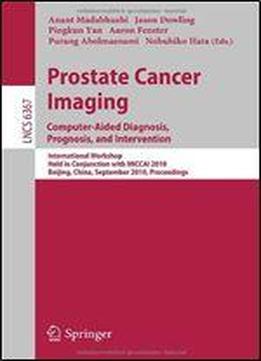
Prostate Cancer Imaging: Computer-aided Diagnosis, Prognosis, And Intervention: International Workshop, Held In Conjunction With Miccai 2010, Beijing, ... (lecture Notes In Computer Science)
by Anant Madabhushi /
2010 / English / PDF
5.3 MB Download
Prostatic adenocarcinoma (CAP) is the second most common malignancy with an estimated 190,000 new cases in the USA in 2010 (Source: American Cancer Society), and is the most frequently diagnosed cancer among men. If CAP is caught early, men have a high, five-year survival rate. Unfortunately there is no standardized ima- based screening protocol for early detection of CAP (unlike for breast cancers). In the USA high levels of prostate-specific antigen (PSA) warrant a trans-rectal ultrasound (TRUS) biopsy to enable histologic confirmation of presence or absence of CAP. With recent rapid developments in multi-parametric radiological imaging te- niques (spectroscopy, dynamic contrast enhanced MR imaging, PET, RF ultrasound), some of these functional and metabolic imaging modalities are allowing for definition of high resolution, multi-modal signatures for prostate cancer in vivo. Distinct com- tational and technological challenges for multi-modal data registration and classifi- tion still remain in leveraging this multi-parametric data for directing therapy and optimizing biopsy. Additionally, with the recent advent of whole slide digital sc- ners, digitized histopathology has become amenable to computerized image analysis. While it is known that outcome of prostate cancer (prognosis) is highly correlated with Gleason grade, pathologists often have difficulty in distinguishing between interme- ate Gleason grades from histopathology. Development of computerized image analysis methods for automated Gleason grading and predicting outcome on histopathology have to confront the significant computational challenges associated with working these very large digitized images.











